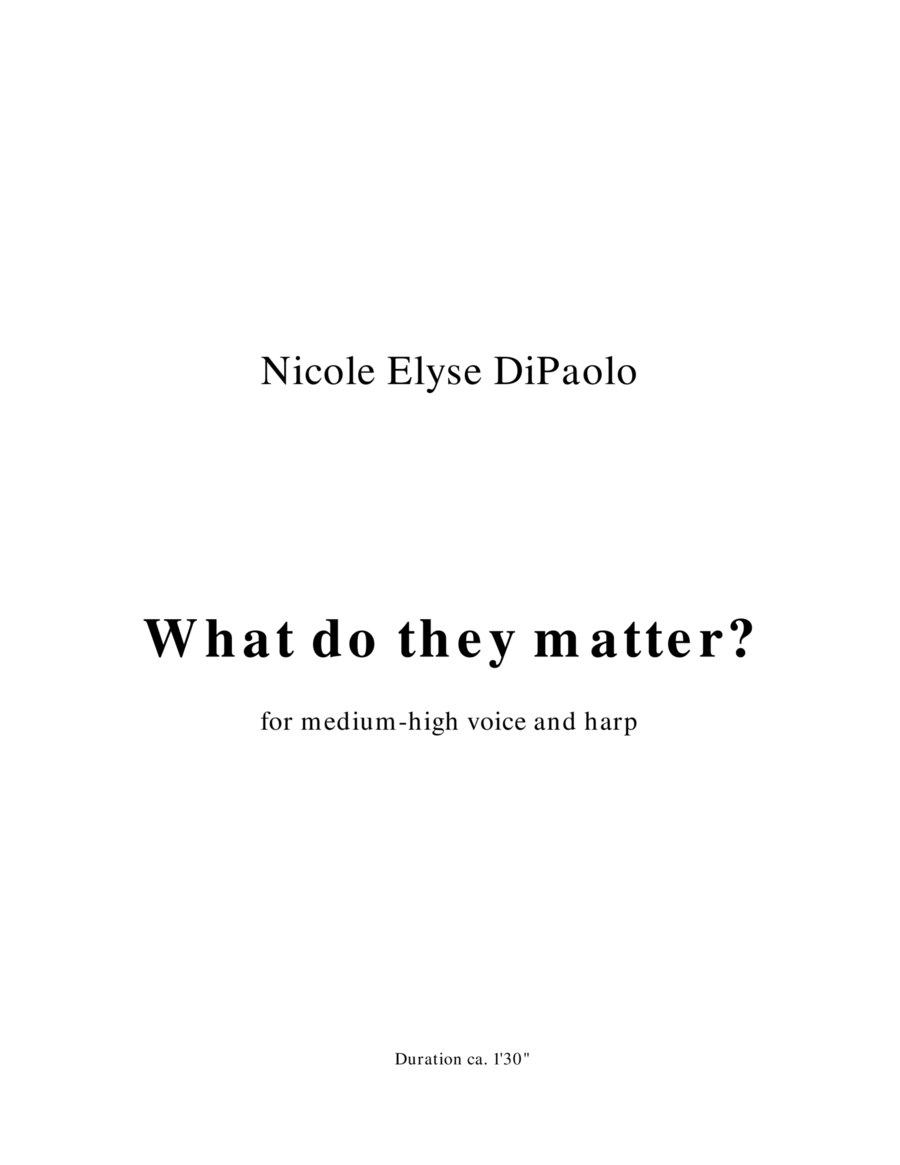Small Ensemble Harp,Voice - Level 5 - Digital Download SKU: A0.799604 Composed by Nicole Elyse DiPaolo. 20th Century,Contemporary. Score and parts. 4 pages. Nicole Elyse DiPaolo #3417119. Published by Nicole Elyse DiPaolo (A0.799604). This short song was composed in 2012 during my doctoral coursework at Indiana University's Jacobs School of Music. It was written for tenor, but given its accessible range (Db4 to G5 in the original key), it would work well for lighter voices in many fachs, including light lyric sopranos, baritones, and mezzos. The text, translated from a poem by Takuboku Ishikawa (1886-1912), is gender-neutral. This would be a great introduction to new music for an undergraduate singer with strong aural skills and a still-light voice (since young dramatics might overpower the harp).If you'd like to talk about commissioning a transposed score, please get in touch! Transposition options will be a bit more limited with the harp than with the piano, but I'm sure we could make something work.Poem text (in English translation, as it appears in the score)Setting sun, Drifting clouds, New moon, Evening twilight, What do they matter to me?Composer biography:Nicole Elyse DiPaolo is a versatile composer, teacher, collaborative pianist, and music theorist currently based in Bloomington, Indiana. Currently a PhD candidate in music theory at Indiana University, she recently completed a doctoral minor in composition, having studied with Claude Baker, Don Freund, P. Q. Phan, and David Schneider. She also holds a B.Mus. from the University of Michigan, where she studied composition with Bright Sheng and piano with Louis Nagel. Nicole's music has been heard across the world: along with numerous performances in the Midwest, her commissioned song settings of Muscogee poet laureate Alexander Posey's texts have been performed at Shorter College (GA) and Lincoln University (PA), and the Smithsonian Institution procured copies of two of these (Nature's Blessings and A Vision) to archive at the National Museum of the American Indian. Additionally, Nicole's viola duo Three Episodes was featured at Ball State University's 40th Annual New Music Festival in February 2010. Her early compositions have been garnering interest as well: music students in Kenya performed several of Nicole's such pieces in May 2013 through a pedagogical project spearheaded by IU faculty member Kimberly Carballo. Nicole's music also received its Mexican premiere in October 2013 with a performance of her Divertimento, written for the International String Quartet of Yucatán. In 2014, Nicole published a set of twenty short pedagogical pieces in uncommon keys, entitled Venturing Beyond, available on SheetMusicPlus. Also a sought-after teacher and adjudicator, Nicole frequently judges regional and divisional MTNA composition competitions at all levels, ranging from elementary to college-level Young Artists, and she also served as the composition department chair at Blue Lake Fine Arts Camp in 2014. For more on Nicole DiPaolo and her varied musical pursuits, visit her website at http://ndipaolo.musicaneo.com !
